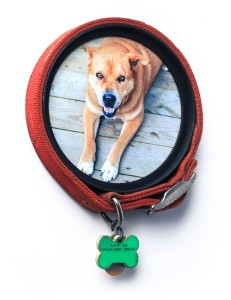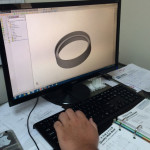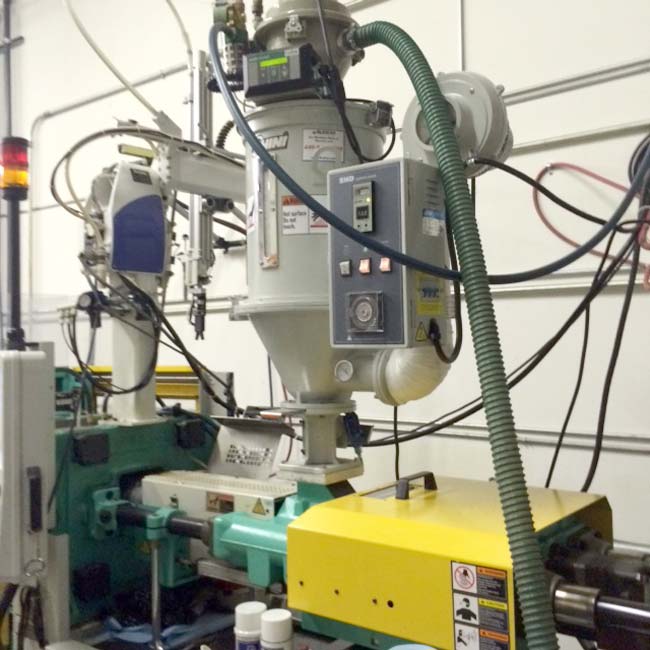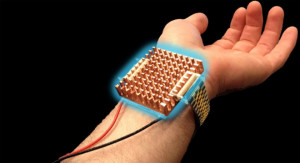
The Collar Keepsake is a brilliant idea for memorializing your pet and using their collar as part of the design. And yes, there’s a geeky side to this post. I promise.
I backed a Kickstarter campaign a few days ago that initially didn’t really fall into the “Geek” category – but it’s for an item that I think is brilliant and wanted to promote, so I reached out to the designer behind the campaign, Kent Ambler, to get the backstory on the geeky side of his project.
We geeks tend to be more occupied with blinking lights, gadgets and code – so our friends are usually few and our closest friends usually have four legs – so I figured most of my fellow geeks could relate to the “awwww” factor of this Kickstarter campaign – but geeky? Oh, yes. It is – if you look under the hood, so to speak.
Ambler, who is already an established artist in his own right, created these small memorials for his own pets, and thanks to the numerous compliments and comments he received from those who saw them, he decided to refine these keepsakes and make them on a larger scale for others.

This is an injection mold. The metal plate on the far right is “plate A” (the outer shell). Plate B & C (second and third from right) contain the mold (yellow clip for when not in use). To the left of the eye bolt (to lower mold into the machine) you will see the ejector pins. After the plastic is injected, the mold is separated (between b & c) and the ejector pins push the new part out of the mold. Depending on the plastic, size of the part, etc, this can take 15 – 20 seconds to over a minute.
Photo by Kent Ambler.
Click the photo for larger image.
So, he did what all geeks do, he got on his computer and started working on the design, refining it in a CAD program. He then worked with machinists operating the CNC machines that create the plates for the injection molds, which will help make these collar keepsake frames en masse.

The designer, Kent Ambler, working on plans for the 3D printed frame for the Collar Keepsake.
Photo provided by Kent Ambler.
Ambler used his CAD design to make some 3D printed models to test for the project. Now that the final design has been tested and proven to be right fit for the frames, the Kickstarter funding will pay for the the molds that will be created by the CNC machine. I of course dig the CNC process, because it involves shiny metal objects. 🙂
The process is quite involved for what is a deceptively simple design to get to a final, polished product for the consumer market. The whole 3D printing revolution that is happening right now is changing the shape of not only quick prototyping for projects like the Collar Keepsake, but also in food production, in prosthetics – the applications keep expanding. In many ways, we are in the third wave of the industrial revolution (the second wave, in my opinion, is the computer age) thanks to 3D printing technology – which has transitioned from crude objects to today’s medical implants, jewelry and car engines. It has the capacity to turn anyone into a Renaissance man or woman. To think of what Da Vinci could have done if 3D printing were available to him boggles the mind… but yet, I digress. 🙂
As of this writing, there’s less than 30 days left to this campaign and still some great early bird options left for backers. Be sure to check out the video below for a preview of what the final product will be, and the heart behind it – now that you’ve seen the geeky innards. 😀
You can follow the project, on Facebook, Instagram, Twitter, and the designer’s website.

Here’s where part of the final magic happens. The model has been prototyped in the 3D printer. The CNC has finished w/ the plates for the injection mold… and here’s the injector – ready to fill the mold w/ the plastic material to make the frames in this cool Kickstarter campaign. Photo provided by Kent Ambler, who took this shot in the shop where the Collar Keepsake will be manufactured after his Kickstarter makes its funding.

 Scientists at MIT took a nod from Psychology 101. One of the basic things you learn in any intro to psychology course is a concept known as “just noticeable difference.” You’re driving down the road, jamming to your favorite song, with the speakers cranked up all the way… you stop the car, get out and go into work. Hours later, you hop into your car to head home and when you start the car, you about jump out of your skin because the radio is so ridiculously loud, you can barely stand it. It is no higher in volume than what you listened to on the way to work – but the just noticeable difference is what makes you lunge toward the volume dial at mach speed.
Scientists at MIT took a nod from Psychology 101. One of the basic things you learn in any intro to psychology course is a concept known as “just noticeable difference.” You’re driving down the road, jamming to your favorite song, with the speakers cranked up all the way… you stop the car, get out and go into work. Hours later, you hop into your car to head home and when you start the car, you about jump out of your skin because the radio is so ridiculously loud, you can barely stand it. It is no higher in volume than what you listened to on the way to work – but the just noticeable difference is what makes you lunge toward the volume dial at mach speed.